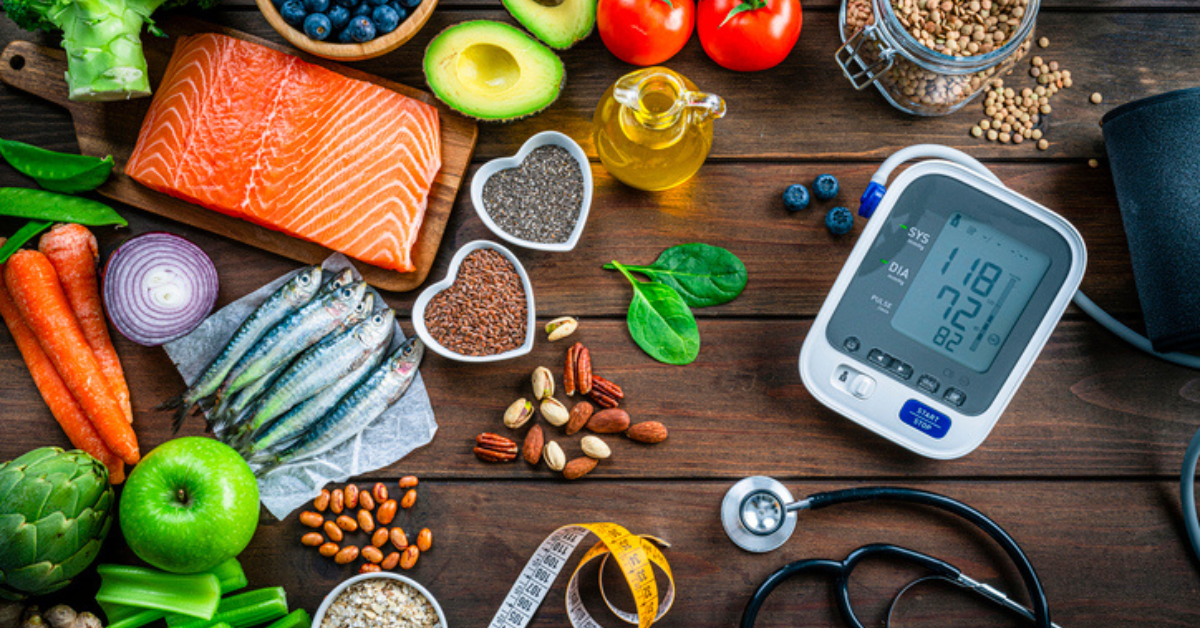HEALTH
Everything You Need to Know About Massage Therapy: Types, Benefits, and Tips
Massage therapy has been practiced for thousands of years and continues to be one of the most popular and effective methods for promoting relaxation, relieving pain, and enhancing overall wellness. Whether you’re dealing with chronic tension, recovering from an injury, or simply seeking a little self-care, massage therapy offers something for everyone. In this article, we’ll explore the most common types of massage, the benefits you can expect, and some practical tips to help you get the most from your session.
What Is Massage Therapy?
Massage therapy is the manual manipulation of soft tissues in the body—including muscles, connective tissues, tendons, and ligaments—using various techniques. It’s used to treat physical ailments, reduce stress, and promote general well-being. Licensed massage therapists are trained to understand anatomy and use different styles and pressures based on your individual needs.
Common Types of Massage Therapy
Understanding the different types of massage can help you choose the right one based on your body’s needs, goals, and preferences.
1. Swedish Massage
Often recommended for beginners, Swedish massage is a gentle, relaxing technique that uses long strokes, kneading, and circular movements to ease muscle tension and improve circulation. It’s perfect for stress relief and relaxation.
2. Deep Tissue Massage
This technique targets deeper layers of muscles and connective tissue. It’s ideal for chronic aches and pains, such as a stiff neck, upper back, or tight legs. Deep tissue massage can feel intense but offers significant relief for long-term tension.
3. Hot Stone Massage
Smooth, heated stones are placed on specific parts of the body and used as massage tools. The warmth helps relax muscles, improve blood flow, and provide a soothing, meditative experience.
4. Thai Massage
Unlike most massage types, Thai massage involves stretching and deep massage. You remain clothed, and the therapist moves your body into yoga-like positions. It’s energizing and improves flexibility and circulation.
5. Sports Massage
Geared toward athletes or physically active individuals, sports massage helps prevent injuries, improve performance, and speed up recovery. It combines techniques from Swedish and deep tissue massages with assisted stretching.
6. Prenatal Massage
Designed specifically for pregnant women, prenatal massage relieves many of the physical discomforts of pregnancy such as back pain, swollen legs, and fatigue. It’s a safe and nurturing way to support both mother and baby.
Key Benefits of Massage Therapy
Massage therapy isn’t just a luxury—it offers a range of physical, mental, and emotional benefits that are backed by science.
1. Reduces Stress and Anxiety
Massage helps lower cortisol levels (the body’s stress hormone) while increasing serotonin and dopamine, which promote happiness and relaxation.
2. Relieves Muscle Tension and Pain
Whether it’s from sitting at a desk all day or intense physical activity, massage helps release tight muscles, break up knots, and reduce soreness.
3. Improves Circulation
The pressure from massage moves blood through congested areas, enhancing oxygen flow and promoting cell repair and healing.
4. Boosts Immune Function
Studies suggest that massage can improve immune system function by increasing lymph flow, which helps your body remove toxins and fight illness.
5. Enhances Sleep Quality
Massage has a calming effect on the nervous system, making it easier to fall and stay asleep. It’s particularly helpful for people with insomnia or sleep disorders.
6. Supports Mental Clarity and Mood
Beyond physical relief, massage promotes a sense of well-being, focus, and clarity. It’s often used as a complementary therapy for depression and anxiety.
-
Tips for Getting the Most Out of Your Massage
To fully benefit from massage therapy, there are a few simple tips you can follow before, during, and after your session.
1. Communicate With Your Therapist
Let your massage therapist know your goals for the session—whether it’s relaxation, pain relief, or specific problem areas. Don’t hesitate to speak up about pressure preferences or discomfort.
2. Hydrate Before and After
Drinking water helps flush out toxins released during the massage and prevents dehydration, especially after deep tissue work.
3. Arrive Early and Relax
Arriving early gives you time to relax and settle in, especially if you’re getting a massage for stress relief. Being rushed can make it harder to unwind.
4. Avoid Heavy Meals Before Your Appointment
A light snack is fine, but eating a large meal can make lying down for an hour uncomfortable. Go for something light if you’re hungry.
5. Don’t Be Afraid to Try Different Styles
Each massage type offers different benefits. If one style doesn’t work for you, try another. Everyone responds differently, so find what suits your body best.
6. Schedule Regular Sessions
While one massage can bring immediate benefits, regular sessions create cumulative effects that support long-term health and wellness.
Final Thoughts
Massage therapy is a powerful tool for managing physical discomfort, improving mental health, and nurturing overall well-being. With so many different types and techniques available, there’s a massage style suited for just about everyone. Whether you’re a busy professional, an athlete, a parent, or someone simply seeking relief from the hustle of daily life, incorporating massage into your wellness routine can be a game-changer. So take a deep breath, book that session, and let your body thank you.
HEALTH
Timeshealthmag Nutrition: Unlocking the Secrets of Optimal Health

In the fast-paced world of wellness, it’s easy to get lost in trends and buzzwords. But when it comes to practical, research-based advice, timeshealthmag nutrition has become a reliable guide for those striving to lead healthier lives. From macro breakdowns to mindful eating and lifestyle tips, TimesHealthMag stands out by blending science with everyday accessibility.
Understanding nutrition isn’t just about counting calories or avoiding carbs. It’s about knowing what fuels your body, how to support your long-term health, and how to adapt to the ever-evolving needs of your lifestyle. Let’s dive deep into how timeshealthmag nutrition is redefining wellness through thoughtful, modern insights that anyone can follow.
The Rise of Timeshealthmag Nutrition
Over recent years, TimesHealthMag has positioned itself as a go-to source for nutrition guidance that cuts through the noise. In a world brimming with misinformation, timeshealthmag nutrition offers content that’s balanced, evidence-driven, and easy to implement. Its focus spans across various demographics, ensuring relevance whether you’re a college student, busy professional, or senior citizen.
This trusted platform champions holistic health, advocating for personalized nutrition strategies that consider mental, physical, and emotional well-being.
Why Nutrition Matters More Than Ever
Proper nutrition is no longer just about weight management—it’s a cornerstone of overall well-being. With the growing awareness of chronic illnesses and lifestyle-related diseases, people are more motivated than ever to take control of their health. Here’s why timeshealthmag nutrition places such strong emphasis on nutritional literacy:
-
Prevention of Diseases: A nutrient-rich diet can help ward off heart disease, diabetes, and certain cancers.
-
Mental Clarity: The brain thrives on vitamins and minerals. Balanced meals can significantly impact mood and cognitive function.
-
Longevity: Quality nutrition supports aging gracefully, enhancing mobility, immunity, and skin health.
Timeshealthmag nutrition educates readers not just on what to eat, but why certain food choices are pivotal for different life stages.
Core Principles of Timeshealthmag Nutrition
Eat Whole, Not Processed
One of the pillars of timeshealthmag nutrition is choosing whole foods over processed ones. Whole foods are rich in fiber, vitamins, and antioxidants, supporting digestive and cellular health.
Actionable Tip: Aim to fill at least 70% of your plate with foods that don’t come in packages—think leafy greens, lean meats, nuts, seeds, and fresh fruits.
Balance Macronutrients
TimesHealthMag often emphasizes the importance of balancing macronutrients: carbohydrates, proteins, and fats. Each plays a crucial role:
-
Carbohydrates: The body’s main source of energy.
-
Proteins: Essential for muscle repair and hormone regulation.
-
Fats: Critical for brain health and nutrient absorption.
Expert Insight: According to registered dietitians featured in timeshealthmag nutrition, skipping one macronutrient category can lead to nutrient imbalances and energy crashes.
Hydration is Non-Negotiable
Often overlooked, hydration is central to effective digestion, nutrient transport, and detoxification. TimesHealthMag consistently reminds readers that staying hydrated helps everything from joint health to skin radiance.
Actionable Tip: Start your day with a glass of water and aim for at least eight cups daily, more if you’re active or live in a hot climate.
Mindful Eating and Behavior Change
Mindful eating is a recurring theme in timeshealthmag nutrition articles. It’s not just what you eat, but how you eat that matters. Eating slowly, savoring each bite, and paying attention to hunger cues can reduce overeating and improve digestion.
Actionable Tip: Put your fork down between bites and chew thoroughly. This small shift can lead to better portion control and more satisfaction with meals.
Tailored Nutrition for Different Lifestyles
Nutrition for Busy Professionals
If you’re always on the go, timeshealthmag nutrition offers hacks for maintaining healthy habits even with a packed schedule. Meal prepping, smart snacking, and nutrient-dense smoothies are all highlighted solutions.
Actionable Tip: Batch cook grains, proteins, and veggies over the weekend to build quick weekday meals.
Nutrition for Fitness Enthusiasts
For those with fitness goals, nutrient timing and recovery matter. TimesHealthMag focuses on the synergy between nutrition and performance, especially emphasizing post-workout meals.
Expert Insight: A mix of protein and carbs within 30 minutes after exercising can accelerate recovery and muscle synthesis.
Nutrition for Aging Adults
As we age, nutrient absorption declines. TimesHealthMag recommends calcium-rich foods, omega-3 fatty acids, and fiber to support bone health, brain function, and digestive efficiency.
Actionable Tip: Include fatty fish like salmon twice a week and increase leafy greens for vitamin K and iron.
Trending Topics in Timeshealthmag Nutrition
Gut Health and the Microbiome
The gut microbiome has gained attention for its role in immunity, mood, and metabolism. Timeshealthmag nutrition regularly explores fermented foods, prebiotics, and probiotic-rich diets to support gut diversity.
Popular Picks: Yogurt, kimchi, sauerkraut, and fiber-rich fruits.
Plant-Based Diets
Plant-forward eating isn’t just a trend—it’s a sustainable way to support your body and the planet. Whether fully vegan or flexitarian, TimesHealthMag promotes plant diversity to meet nutritional needs without compromising flavor.
Actionable Tip: Swap meat with legumes like chickpeas or lentils a few times a week to reduce saturated fat intake.
Intermittent Fasting
Fasting protocols have become mainstream, and timeshealthmag nutrition approaches the topic with caution and balance. It recognizes the potential metabolic benefits while acknowledging the need for individualization.
Expert Insight: Fasting isn’t suitable for everyone. Always consult a healthcare provider before attempting new dietary patterns.
Vitamins and Supplements: Necessary or Not?
TimesHealthMag encourages getting nutrients from food first, but recognizes that supplements can be helpful in cases of deficiency or restricted diets.
Key Takeaways:
-
Vitamin D may be necessary in low-sunlight climates.
-
B12 supplementation is crucial for vegans.
-
Omega-3 supplements can support heart health if fish intake is low.
Actionable Tip: Get annual blood tests to track vitamin levels and adjust your supplement needs accordingly.
Debunking Nutrition Myths
One of the strengths of timeshealthmag nutrition is how it tackles common myths head-on:
-
Myth: Carbs make you fat.
-
Truth: Excess calories make you gain weight, not carbs alone.
-
-
Myth: You need to detox with juices.
-
Truth: Your liver and kidneys already detox your body effectively.
-
-
Myth: Skipping meals boosts weight loss.
-
Truth: It can actually slow metabolism and increase cravings later.
-
TimesHealthMag is committed to separating facts from fiction, making sure readers aren’t misled by internet fads.
Building Sustainable Habits
Quick fixes rarely lead to lasting change. That’s why timeshealthmag nutrition advocates for sustainable, gradual lifestyle shifts instead of drastic diets.
Actionable Tip: Focus on adding more healthy foods rather than cutting out all indulgences. This mindset creates a positive relationship with food.
Expert Insight: Behavioral psychologists suggest that it takes around 66 days to form a new habit. Consistency over perfection is key.
The Role of Emotional Health in Nutrition
Stress, anxiety, and emotional health play a huge role in our eating habits. TimesHealthMag acknowledges that true health is multidimensional.
Tips for managing emotional eating:
-
Practice journaling before meals
-
Use a hunger scale to evaluate true hunger
-
Incorporate mindfulness practices like meditation or yoga
This emotionally intelligent approach sets timeshealthmag nutrition apart by offering support for mental well-being as part of the broader wellness picture.
Recipes and Meal Ideas
To make healthy eating enjoyable, timeshealthmag nutrition frequently shares easy, delicious, and nutrient-packed recipes.
Popular features include:
-
15-minute high-protein breakfasts
-
One-pan veggie-packed dinners
-
Smoothies with superfood boosts
-
Low-sugar dessert swaps
These recipes emphasize ingredients you can find anywhere and show how accessible wellness cooking can be.
Embracing Diversity in Nutrition
There is no one-size-fits-all diet. TimesHealthMag celebrates global cuisines and diverse dietary needs. Whether it’s Mediterranean, South Asian, African, or Latin American cuisine, every food culture has healthful components worth embracing.
Actionable Tip: Rotate spices like turmeric, cumin, or garlic into your meals for flavor and health benefits.
The Power of Community and Shared Goals
Finally, timeshealthmag nutrition thrives on community engagement. The publication frequently features success stories, expert interviews, and social media highlights that reinforce a sense of shared commitment to better health.
Expert Insight: People are more likely to stick with their nutrition goals when supported by a community of like-minded individuals.
Conclusion: Empower Your Wellness Journey with Timeshealthmag Nutrition
Your health journey doesn’t have to be overwhelming. Thanks to the guidance of timeshealthmag nutrition, making informed, sustainable, and nourishing choices has never been more attainable. Whether you’re just starting to pay attention to your plate or you’re deep into your wellness path, the practical tips, expert insights, and inclusive approach of TimesHealthMag can help you thrive.
Let this be your reminder: good nutrition is not about perfection—it’s about progress. Every balanced plate, every mindful moment, and every step toward your goals counts.
Let timeshealthmag nutrition be your daily inspiration for a vibrant, energized, and healthful life.
-

 ENTERTAINMENT2 weeks ago
ENTERTAINMENT2 weeks agoAnimeidhen: Your Gateway to a Unique Anime Universe
-

 TECHNOLOGY2 weeks ago
TECHNOLOGY2 weeks agoAbout Waopelzumoz088: Everything You Need to Know
-

 TECHNOLOGY3 weeks ago
TECHNOLOGY3 weeks agoZryly.com Cybersecurity: Protecting Digital Assets
-

 CRYPTO2 weeks ago
CRYPTO2 weeks agoCrypto30x.com Ocean: The Future of Decentralized Finance
-

 Blog2 weeks ago
Blog2 weeks agoWhat Cilfqtacmitd Help With: Exploring Its Benefits and Use Cases
-

 Lifestyle3 weeks ago
Lifestyle3 weeks agoBlog LuxuryInteriors.org: Ultimate Guide To Redefining Interior Design
-

 Lifestyle2 weeks ago
Lifestyle2 weeks agoBoosting Life Quality Nobullswipe: A No-Nonsense Guide
-

 ENTERTAINMENT2 weeks ago
ENTERTAINMENT2 weeks agoCompetitive Edge the Serpentrogue: Mastering Strategy and Tactics
